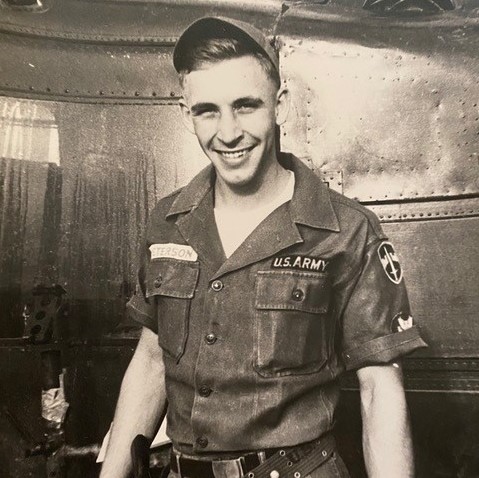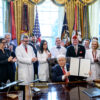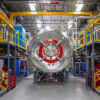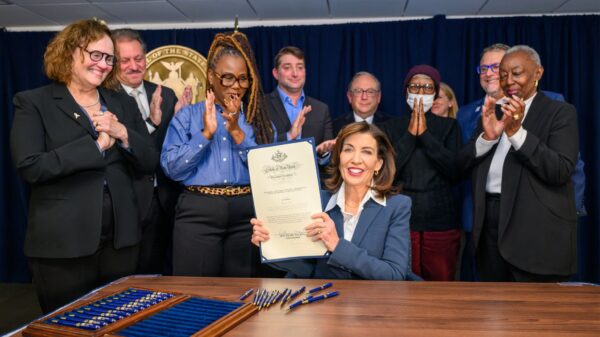The United States Department of Veterans Affairs (VA) wants to remind combat and service vets to get the main components of their respiratory tract screened in the days leading up to Lung Cancer Screening Week next month.
The American Legion, a veterans advocacy organization instrumental in founding the Veterans Administration in the 1930s, posted a notice about the VA encouraging higher testing rates on Thursday.
Veteran smokers between the ages of 50 and 80 are eligible for low-dose CT scans (LDCT).
“LDCT can find lung cancer at an early stage when the chance for a cure is greater,” the American Legion said, “however, it also may detect lung abnormalities that don’t turn out to be lung cancer.”
The VA established its first standardized lung cancer screening program in 2012. Prior to that date, the administration had conducted studies and promoted awareness among vets but did not have a comprehensive framework.
The Administration also created a Lung Precision Oncology Program in 2016 that focuses on treatment in addition to screening.
Joe Biden’s Promise to Address Comprehensive Toxics (PACT) Act established in 2022 is one of the most recent government initiatives to help achieve higher screening rates. It focuses on ensuring that American service members who were exposed to toxic substances are examined properly.
President Biden’s PACT Act expanded lung cancer screenings for millions of veterans, to catch lung cancer early & save lives.
Director Prabhakar visited the Palo Alto VA Medical Center—they’re delivering better care to veterans, thanks to the PACT Act & the #BidenCancerMoonshot. pic.twitter.com/sfQqs9822Y
— White House Office of Science & Technology Policy (@WHOSTP) January 26, 2024
Read more: Breath Diagnostics takes aim at lung cancer with One Breath
Read more: Breath Diagnostics pioneers novel lung cancer breath test
Kansas City VA doc uses new tech for lung cancer screening
American respiratory expert Dr. Andrea Covey has been using a state-of-the-art new lung cancer screening tool called an ION machine. It is highly precise and maneuverable.
This minimally invasive robotic bronchoscopy device was developed by Intuitive Surgical, Inc. (NASDAQ: ISRG). A flexible catheter tool gets inserted through a patient’s mouth and into their lungs. A machine operator can then navigate their airways to test nodules for the disease and catch it in its early stages.
“I’ve been in medicine for 20 years if you had asked me as a medical student will you get to use a robot to diagnose people with lung cancer, I would have laughed at you,” Covey said. She has since been proved wrong.
Other U.S. companies like Grail Bio, Freenome and Breath Diagnostics Inc. have been pioneering minimally invasive tests too.
VA uses 3D printing tech to provide radiation therapy
The administration has been harnessing the capabilities of 3D printers to provide cancer therapy too.
Last week, the VA wrote about its new FDA-approved radiotherapy boluses (RTB).
“This advanced technology supports precise radiation, targeting tumours while sparing healthy tissue, improving cancer care for Veterans,” the organization explained.
This tech’s use has become widespread throughout the VA largely because of the enhanced benefits provided through the PACT Act. They have been in use by veterans throughout the U.S. since April last year.
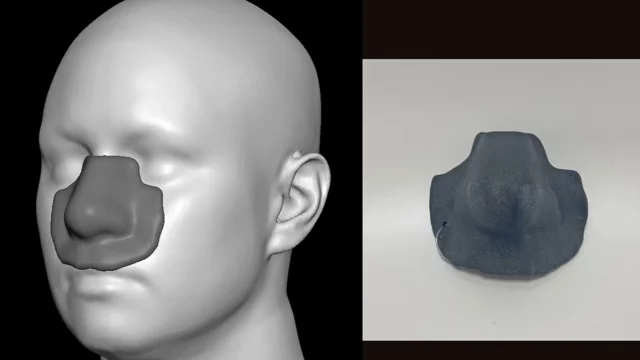
An RTB for the nose. Image credit: Veterans Affairs
rowan@mugglehead.com

